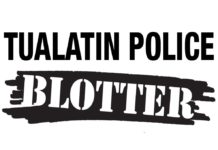I’ve devoted quite a bit of time this year to the concept of fasting. I’m using therapeutic fasting with my patients in clinic and am excited to share some of what I’ve learned with you. First, let’s get the terminology down. Fasting means not eating – we all fast overnight while we are sleeping and we break our fast with our first meal of the day, break-fast, breakfast. Fasting can be extended into the daylight hours in a variety of ways and has been an important practice for many religious groups (Ash Wednesday, Lent, Yom Kippur, Ramadan for example). This history is important because it reminds us two things – first, that fasting is generally safe (generally, keep reading for more information about that!) and second, that fasting is or can be cultural and social – this last has a lot to do with how successful someone might be with a fasting protocol. Many religious fasting protocols call for not eating during daylight hours, so the members of that religion may start the day early with a light meal and end the day with a family feast after not eating all day.
While the religious style of fasting may have some health benefits, the types of fasting we may recommend for health are different. For a water fast, we would recommend the consumption of only water for a certain number of days – no food at all at any time of day. If you’ve ever been sick and just couldn’t eat, you may have accidentally done a 1-2 day water fast. I generally recommend seeking naturopathic or medical guidance for those interested in water fasting. Dry fasting involves not eating or drinking anything, and this is not a form of fasting that I recommend due to the negative effects of dehydration.
Another popular style of fasting you may have heard of is intermittent fasting, also sometimes called restricted feeding window. Some people will use the term intermittent fasting to refer to a regular schedule of water fasting and others use the term to refer to restricted feeding window. Restricted feeding window means extended your overnight fast longer. If you start eating shortly after rising and have your last bites of food shortly before going to bed, your current fasting window is about 8-9 hours. Preindustrial Americans used to have an average overnight fast of about 14 hours, but this has decreased significantly for many.
For a restricted feeding window diet, there are many suggestions and options for how to do this. 16/8 is a popular plan and involves extending your evening fast to 16 hours and eating during an 8-hour window. I have also seen plans with a 2 or 4-hour eating window, also sometimes called the one meal a day (OMAD) plan. The frequency of how often one restricts their window varies from a couple days per week to daily. I find this variability to be a good feature of time restricted feeding because there is flexibility that allows people to make it work for them. For a 16/8 plan, breakfast would be at 8 am and a second meal would be finished around 4 pm.
When I suggest time-restricted feeding with my patients, I have them start by determining how long their overnight fast is and start gradually increasing that time by cutting off snacking and sweets after dinner. I suggest intermediate goals of 10, 12 and 14 hours fasting. For most, this is a healthy option, not only because it increases the length of the fast, but also because it removes some empty or excess calories. Depending on the reasons we’re discussing fasting, I may then recommend moving their dinner earlier or other more intense forms of time-restricted eating.
So what’s so healthy about fasting? The research is growing, and the health benefits are varied, but profound, including weight loss, improved glucose regulation, improved insulin sensitivity, improved blood pressure, better outcomes in cardiovascular disease, effects on bone density, decreased inflammation, reduced tumor size in cancer, neurogenesis and delayed onset of neurodegenerative diseases and more. We’re still learning the mechanisms of how and why fasting has these effects, but stimulation of autophagy, an important repair process in the human body, seems to play a key role.
While the potential benefits are many and varied to fasting in its varied forms, there are some concerns to keep in mind. I mentioned cancer above and it’s important to remember that cancer treatment is complicated and making adjustments should be done carefully and with qualified supervision (visit oncanp.org). There are also some strict contraindications to fasting, including people with Type 1 diabetes, advanced heart, liver or kidney disease and women who are pregnant or breastfeeding. I also urge caution in starting fasting for any patient taking prescription medications and those with thyroid or adrenal problems. I urge all patients interested in starting a fasting protocol to speak to their doctor and have lab testing run prior to beginning to ensure that it is safe and to have baseline values to evaluate its effect on your health. The naturopathic physicians at True Health Medicine are accepting new patients and available to help you with your health care needs, including starting therapeutic fasting protocols.




















